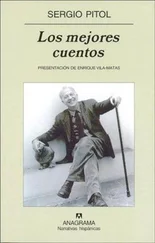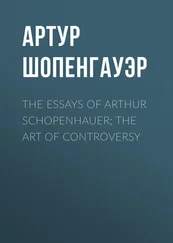Ortega y Gasset points out in his essay on Goya how decisive the popular veneer was for Spanish culture in the eighteenth century: “In the second half of that century the masses were housed in life forms of their own invention, with an enthusiasm aware of itself and with ineffable delight, without looking sideways at the aristocratic customs in anxious flight toward them. Meanwhile, the upper classes were only happy when they abandoned their own ways, and they became saturated with plebeianism.”
Regarding that plebeianism alluded to by Ortega, Carmen Martín Gaite, in Love Customs in Eighteenth-Century Spain , studied the changes that took places in Spanish society at the end of the eighteenth century due to the introduction into court life of traditions and customs viewed until then with contempt by people of higher rank. Martín Gaite amply illustrates this desire for debasement to which Ortega alluded. We are introduced to a world in which ladies and gentlemen competed to speak, dress, and behave like their maids or footmen, with the relaxation of customs that this implied. Jean-François de Bourgoing, a French traveler in Spain, writes: “There are, among both sexes, persons of distinguished rank, who seek their models among the heroes of the populace, who imitate their dress, manners, and accent, and are flattered when it is said of them, ‘He is very like a majo .’ — ‘One would take her for a maja .’” 14And other authors of the time lament that “ladies and even the señoras of the highest birth, have been transformed into so many other majas in their dress, their conversation, and their manners as to be indistinguishable from that despicable class of people […] and they have reached such a point in the degradation of their respective graces, lordships, and excellencies that when they have a cigar in their mouths they resemble even more the most vulgar women of this low caste […]. In general, all those fops eager to practice their majismo , to be seen on the Pradera de San Isidro, and learn from their footmen the jota , the guaracha , the bolero , in short, their songs and dances, boasted of courting an actress.” Another traveler picks up on the rumors that were spreading through Madrid about the Duchess of Alba, advanced in her desire for unprejudiced modernity: “Several years past,” they say, “she had already put aside any appearance of dignity to the point of going out in search of adventure in the public squares, her lack of scruples reaching such a degree that she even counted toreros among her lovers. At midnight, they would gather in the middle of the Prado to have a tertulia and play music.”
The plebeianization of the aristocracy covers an unfilled spiritual space. It was a means of escape from the ailing morality in use; perhaps also a vital response to the apparent backwardness before an enlightened Europe, and, above all, before the greatness of a lost past. That taste for popular customs and expressions becomes the Hispanic embodiment of Volksgeist (the spirit of the people) celebrated by the German Romantics and disseminated at a rapid pace across the rest of Europe. The greatest exponent of that popular spirit in Spanish art was Francisco de Goya. It could be said that if the Volksgeist produced an immense figure in the art of Europe, it was precisely that of Goya. The Spanish artist painted the populace in a thousand ways, as mere ornamentation, with an almost Arcadian tone, in the tapestries for the Royal Palace, as a collective hero in The Second of May 1808 , as a tragic character in The Third of May 1808 , as a demonic protagonist in many of his witches’ covens, as maker of a thousand disasters in his etchings, and as magnificent representative of the absurd in an extraordinary painting, the absurdity of absurdities, carnival itself — Bakhtin in the raw! — which is that small glory called Burial of the Sardine.
The aristocracy assumed majismo in an absolutely theatrical way; pretending to be what it was not, making daily rituals a form of spectacle. Living in the theater and dramatizing life to the unthinkable. For many of the characters in The Court of Carlos IV , the descent among the rabble is like taking the waters: a powerful source of life. Among them, the Queen María Luisa, no less! And the Duchess Lesbia and Don Juan de Mañara and, on a smaller scale and more in the past, the Countess Amaranta.
If Galdós lingers on Moratín’s The Maidens’ Consent , it is not due to any special appreciation for his prescripts, which he never accepted, but to moral imperatives. For the young liberal writer who undertakes in 1873 the task of fictionalizing a century and a half of Spanish history, that is, after the Prim Revolution and on the eve of the First Republic, educating Spain marks the beginning of regeneration; once placed in this terrain, the education of women seems essential to the efficient running of the country he believed to be on the horizon. The Maidens’ Consent was one of the first calls to educate young women and a warning against the education in convents, where pretending was considered an ideal standard of social co-existence. Moreover, the implementation of a neoclassical theater with its unities of place, time, and action suddenly made the theater of Luciano Comella obsolete with all its disparate theatrical effects, its booming titles, its historical improbability, and its cheap sentimentality. The collapse of this false, ludicrous ostentation and the return of dignity to theatrical language must have seemed to Galdós like signs that were already pointing to the mature and industrious Spain that he desired.
In fact, this new theater that excited a handful of spectators and terrorized the old guard had a short life in Spain. Alfonso Reyes reminds us that Spanish humanism has always distinguished itself because of its aversion to a strict adherence to convention. Therefore, no great work of art in Spain has been born of narrow precepts. Galdós himself, however much sympathy he might have felt for Moratín and his didactic theater, places in the mouth of Araceli, in passing, a comment that to us seems like an unrepressed sigh of relief. Once again, the speaker is not the young page who was the protagonist of the story but the old Don Gabriel de Araceli who, recalling Moratín’s importance during his time, wrote: “No one could deny him the honor of having revived the true spirit of Spanish comedy, and The Young Maidens’ Consent has always seemed to me a work of great genius in spite of the part I took at the first performance of that play — as the reader may remember,” concluding, “He died in 1828, but his letters and papers reveal no trace of his having known the works of Byron, Goethe, or Schiller; he went to his grave believing in Goldoni as the greatest poet of his day.” A superb way to dot the i’s and cross the t’s because, until recently, the stature attributed to the Venetian playwright in Spain was more or less the same as that enjoyed by the brothers Álvarez Quintero.
In Galdós, exercises of intertextuality and meta-fiction complement and constitute each other. In The Court of Carlos IV , a complex and almost imperceptible game between Gabriel Araceli, the very young central character, and the same Gabriel sixty-something years later as he is writing his memoirs, takes place. The circumstances viewed through the eyes of the young narrator are recounted with the voice of someone who is living amazing times. On those occasions the space is covered with a bright light and that brightness endows the page’s movements with an exceptional agility. Gabriel’s complicated maneuvers to dodge the weighty commissions of comedians and aristocrats, and finally, of constables, the speed of his movements, his personal grace, the repetitive game of hide-and-seek that allows him to survive risks, inevitably evoke the quintessential page, the marvelous Cherubino, less Beaumarchais’ than Da Ponte’s and Mozart’s. The author’s sporadic interventions, in the voice of the former page turned prosperous octogenarian, exist to correct or broaden assertions made by the young protagonist, if not to inform the reader about events following the period during which the Episode takes place. In 1805, the year in which The Maidens’ Consent was published, Moratín was a living author, and even lived twenty years more in exile in Bordeaux; the judgment regarding his ignorance of Byron, Goethe, and Schiller constitutes one of the additions of the old Araceli to the past. The young Gabriel would not have been able, for obvious reasons, to make that comment. The use of more or less disguised meta-fictional techniques provide a ripple that animates the story without creating unnecessary difficulties.
Читать дальше












